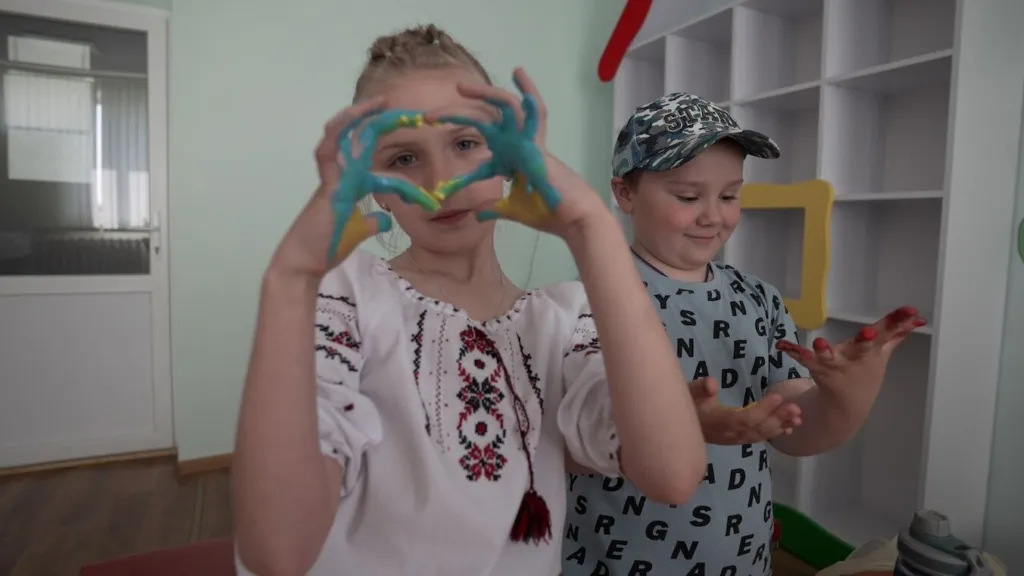The Global Mental Health Crisis: 10 Numbers to Note
Mental health issues are on the rise around the world. Here are 10 numbers that highlight the magnitude of the hidden crisis, and the need to take action.

Mental health is essential to a healthy life. But billions of people around the world struggle with feelings of anxiety, fear, isolation, and depression, lacking access to the quality care and support they need.
The already grim mental health crisis has only been compounded by COVID-19, with millions of people now feeling the ripple effects of the pandemic.
The world is facing a mental health crisis that demands action.
At Project HOPE, we are committed to ensuring everyone has access to the health care they need to reach their full potential. That’s why we’re continuing to train frontline health workers to expand access to mental health care, address the toll of conflict and crisis, and protect their own mental health.
Here are 10 numbers that help to highlight the severity of this hidden crisis, and its social and financial costs.
Half of the global population will experience mental illness.
Mental health issues are widespread, in every community, in every country, on every continent. One in four people are afflicted by mental illness at some point in their lives, with women more likely than men to be diagnosed.
Over two-thirds of people with mental health conditions don’t receive the care they need.
A huge portion of the population — as much as 70% — doesn’t receive treatment for mental illness. Why? Obstacles include lack of resources and trained health workers, but in many cases the social stigma around mental health is the greatest barrier to care.
In the U.S., only 1 in 3 people experiencing mental illness receive treatment. The gap is widest in low- and middle-income countries, though, where more than 75% of people suffering from mental disorders lack access to care.

People with serious mental illness are twice as likely to develop cardiovascular and metabolic diseases.
Those with mental health issues are more susceptible to facing other health challenges, including dangerous cardiovascular and metabolic diseases. People with depression have a 40% higher risk of developing these conditions, while people with serious mental illness are nearly twice as likely.
280 million people are affected by depression.
Depression is a leading cause of disability worldwide, affecting 1 in 3 women and 1 in 5 men from all walks of life.
In the U.S., rates of depression are higher than ever, with 18% of adults and 25% of people under 30 reporting experiences of depression or receiving treatment for it.
Left untreated or at its worst, depression can lead to suicide, which claims more than 700,000 lives every year.

Doctors are twice as likely to die by suicide.
The COVID-19 pandemic took a devastating toll on the world’s health care workers, with grief, anxiety, depression, post-traumatic stress disorder, and suicide just a few of the potential long-lasting effects. Doctors are already twice as likely as the general population to die by suicide — one of the highest rates of any profession — and women are the most vulnerable.
22% of people who have experienced conflict will develop a mental disorder.
One-quarter of the global population lives in places affected by conflict, and over 114 million people have been forcibly displaced by either conflict, persecution, violence, or human rights violations. The resulting impact on mental health is detrimental and widespread.
Almost all people who live through conflict or war experience psychological distress, and about 1 in 5 will develop depression, anxiety, post-traumatic stress disorder, bipolar disorder, or schizophrenia.
Around 1 in 4 Americans seeking mental health treatment worry about what others will think.
Even though more than half of Americans seek mental health services, there is still an unfortunate and sometimes debilitating social stigma surrounding mental illness. A new national survey reveals 7 in 10 Americans believe there is a mental health stigma, and 27% of Americans say shame or embarrassment might discourage them from seeking treatment.

About 15% of the world’s adolescents have a mental health condition.
Around 1 in 7 young people ages 10 to 19 have a mental health condition.
Mental health issues often start in the early stages of life: About half of all mental health issues begin before age 14 — amid the pressures and transitions of coming of age — and most cases go undetected. Young people living in areas affected by conflict, natural disasters, and disease are especially vulnerable to mental illness and distress.
Mental health disorders could cost the world $16 trillion by 2030.
The mental health crisis doesn’t just have medical and social repercussions — it also has a serious financial cost. The global economy loses about $1 trillion each year due to depression and anxiety. It’s estimated that mental health conditions could cost the economy as much as $16 trillion between 2011 and 2030.
Over half of Americans with a mental illness don’t receive treatment.
Lack of access to quality mental health care is a serious global problem — but it’s also an issue in the U.S. More than 27 million Americans experiencing mental illness are going untreated, and the list of reasons is long: the cost of care, gaps in insurance coverage, a lack of qualified psychiatrists, and a disconnect between primary care systems and behavioral care systems.
This story was originally published on October 5, 2020 and has been updated.



